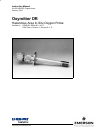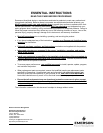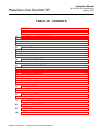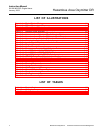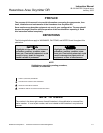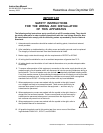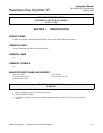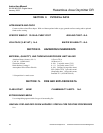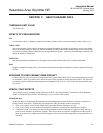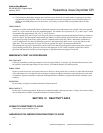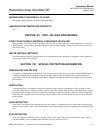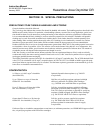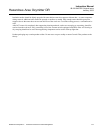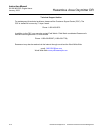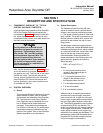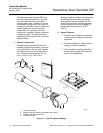
Instruction Manual
IB-106-340CDR Original Issue
January, 2002
Rosemount Analytical Inc. A Division of Emerson Process Management P-5
Hazardous Area Oxymitter DR
SECTION V. HEALTH HAZARD DATA
THRESHOLD LIMIT VALUE
(See Section III)
EFFECTS OF OVER EXPOSURE
EYE
Avoid contact with eyes. Slightly to moderately irritating. Abrasive action may cause damage to outer surface of eye.
INHALATION
May cause respiratory tract irritation. Repeated or prolonged breathing of particles of respirable size may cause inflam-
mation of the lung leading to chest pain, difficult breathing, coughing and possible fibrotic change in the lung (Pneumo-
coniosis). Pre-existing medical conditions may be aggravated by exposure: specifically, bronchial hyper-reactivity and
chronic bronchial or lung disease.
INGESTION
May cause gastrointestinal disturbances. Symptoms may include irritation and nausea, vomiting and diarrhea.
SKIN
Slightly to moderate irritating. May cause irritation and inflammation due to mechanical reaction to sharp, broken ends
of fibers.
EXPOSURE TO USED CERAMIC FIBER PRODUCT
Product which has been in service at elevated temperatures (greater than 1800ºF/982ºC) may undergo partial conversion
to cristobalite, a form of crystalline silica which can cause severe respiratory disease (Pneumoconiosis). The amount of
cristobalite present will depend on the temperature and length of time in service. (See Section IX for permissible expo-
sure levels).
SPECIAL TOXIC EFFECTS
The existing toxicology and epidemiology data bases for RCF’s are still preliminary. Information will be updated as
studies are completed and reviewed. The following is a review of the results to date:
EPIDEMIOLOGY
At this time there are no known published reports demonstrating negative health outcomes of workers exposed to re-
fractory ceramic fiber (RCF). Epidemiologic investigations of RCF production workers are ongoing.
1) There is no evidence of any fibrotic lung disease (interstitial fibrosis) whatsoever on x-ray.
2) There is no evidence of any lung disease among those employees exposed to RCF that had never smoked.
3) A statistical “trend” was observed in the exposed population between the duration of exposure to RCF and a de-
crease in some measures of pulmonary function. These observations are clinically insignificant. In other words, if
these observations were made on an individual employee, the results would be interpreted as being within the nor-
mal range.



